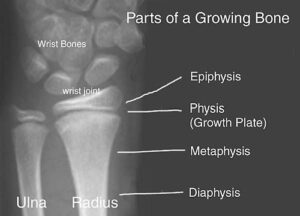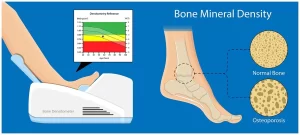Introduction
While most males experience the majority of their height growth during their teenage years, some may still seek ways to increase their height after reaching 20. Height is primarily determined by genetics, but other factors, such as nutrition, exercise, and lifestyle, can also play a role. This article explores whether it’s possible to grow taller after 20, the medical and imaging investigations required, the most effective exercises, potential drug treatments (with their side effects), and how yoga can contribute to height increase.
Can You Increase Height After 20?
Typically, height growth occurs when the growth plates in the bones, known as epiphyseal plates, remain open. By age 20, these plates usually close, especially in males, which makes natural growth more difficult. However, there are still ways to improve posture and achieve minor height increases through specific exercises and practices. Additionally, some medical treatments might stimulate growth hormones, though they should be approached with caution and under professional guidance.
Medical and Imaging Investigations for Height Increase
If you’re considering medical intervention for height increase, certain tests and imaging techniques can assess the state of your growth plates and hormone levels. Here’s a look at the essential investigations:
1. Bone Age X-Ray
- Purpose: An X-ray of the hand or wrist can reveal bone age, indicating whether the growth plates have closed or remain open. If they’re closed, further natural growth is unlikely.
- Procedure: This involves taking an X-ray of the left hand and wrist and comparing it to standard bone age charts.

2. Hormone Blood Tests
- Growth Hormone (GH): Measuring GH levels can help determine if the body has a natural deficiency that could be addressed with therapy.
- Insulin-Like Growth Factor 1 (IGF-1): IGF-1 plays a significant role in stimulating growth. High levels indicate sufficient GH activity, while low levels may indicate a deficiency.
- Thyroid Hormones: Thyroid hormones affect metabolism and growth. Hypothyroidism (underactive thyroid) can result in growth delays.
3. MRI of the Pituitary Gland
- Purpose: The pituitary gland produces growth hormone, which is essential for height increase. An MRI can detect abnormalities in the gland that could impact hormone levels.
4. Bone Density Test
- Purpose: A bone density test helps assess the strength of the bones, which is essential for those considering any height increase strategies involving exercise or medication.

Consult an endocrinologist for these tests, as they can help you understand whether medical intervention for height increase is suitable for you.
Exercises to Help Increase Height After 20
Certain exercises may not directly increase bone length but can improve posture, strengthen core muscles, and promote an appearance of height. Regular practice of these exercises can make a significant difference:
1. Hanging Exercises
- How to Do It: Grab a horizontal bar and hang with your arms extended. Hold the position for 15–20 seconds, then rest. Repeat 3–5 times.
- Benefits: Hanging helps stretch the spine, relieve compression between vertebrae, and improve posture, which can create the impression of increased height.
2. Stretching Exercises
- Cobra Stretch: Lie on your stomach with hands under your shoulders. Push your chest upwards, keeping your hips on the ground.
- Bridge Stretch: Lie on your back, bend your knees, and lift your hips while keeping your hands on the floor.
- Benefits: These stretches target the spine and core, helping to elongate the upper body and improve flexibility.

3. Jumping and Skipping
- How to Do It: Perform regular jumping exercises like skipping rope or box jumps for 10–15 minutes daily.
- Benefits: Jumping exercises strengthen the legs, stimulate growth hormones, and improve posture.
4. Pilates and Core Strengthening Exercises
- How to Do It: Focus on exercises like leg raises, planks, and abdominal crunches.
- Benefits: A strong core supports the spine, helping with alignment and posture, which can make you appear taller.
5. Swimming
- How to Do It: Try to swim 30 minutes a day, focusing on strokes like freestyle and breaststroke.
- Benefits: Swimming is a full-body workout that helps elongate the muscles, strengthens the core, and promotes flexibility.
Potential Drugs and Treatments for Height Increase After 20
While drug treatments for height increase are generally less effective after the growth plates have closed, certain medications may be prescribed in specific cases. Always consult a healthcare professional before using any medications.
1. Growth Hormone Therapy
- Usage: GH therapy is primarily used for individuals with GH deficiency.
- Side Effects: Long-term side effects may include joint pain, muscle weakness, swelling, and increased risk of diabetes.
2. IGF-1 Supplements
- Usage: IGF-1 is sometimes prescribed alongside GH to enhance its effectiveness.
- Side Effects: Side effects can include insulin resistance, joint pain, and potential nerve-related symptoms.
3. Testosterone Therapy
- Usage: Testosterone therapy may be used in some cases to stimulate growth, but it is typically for those with delayed puberty.
- Side Effects: Possible side effects include acne, mood swings, and liver dysfunction. It should not be used solely for height increase due to its risks.
4. Supplements (e.g., Calcium and Vitamin D)
- Usage: Calcium and Vitamin D supplements are essential for bone health, though they don’t directly increase height after the growth plates close.
- Side Effects: Excessive intake of calcium can cause kidney stones, while too much Vitamin D may lead to toxicity.
Note: These drugs should only be used under the supervision of a qualified healthcare provider. Self-administration can lead to severe health risks.
The Effects of Yoga on Height and Posture
Yoga is a holistic practice that can improve flexibility, strength, and posture, all of which contribute to a taller appearance. Here are some yoga poses that may help with height increase:
1. Tadasana (Mountain Pose)
- How to Do It: Stand with feet together, arms at your sides. Stretch your arms up and stand on your toes, stretching as much as possible.
- Benefits: Tadasana strengthens the core, improves balance, and stretches the spine, helping with posture and alignment.
2. Bhujangasana (Cobra Pose)
- How to Do It: Lie on your stomach, hands under shoulders, and lift your chest, keeping your hips on the floor.
- Benefits: This pose stretches the spine and opens the chest, promoting spinal alignment and improving flexibility.

3. Trikonasana (Triangle Pose)
- How to Do It: Stand with your feet apart, turn one foot out, and stretch to the side, reaching one hand to your foot and the other straight up.
- Benefits: This pose helps in stretching the back, hamstrings, and legs, contributing to better flexibility and posture.
4. Surya Namaskar (Sun Salutations)
- How to Do It: This is a sequence of 12 yoga poses performed in a flowing movement. Try to perform 10–15 rounds daily.
- Benefits: Sun salutations stretch the entire body, promoting flexibility, spinal health, and muscle toning.
5. Adho Mukha Svanasana (Downward-Facing Dog)
- How to Do It: Start on all fours, lift your hips to create an inverted V-shape. Hold for 15–20 seconds, then relax.
- Benefits: This pose stretches the back, shoulders, and hamstrings, promoting spinal decompression.
Regular practice of these yoga poses can make a difference in posture, flexibility, and muscle strength, all of which contribute to an overall taller appearance.
Frequently Asked Questions (FAQ)
1. Can I grow taller after 20?
While natural height increase is challenging after 20, you can improve posture and flexibility through exercises and yoga, which can make you appear taller.
2. What medical tests are needed for height increase?
Bone age X-rays, hormone blood tests (like GH and IGF-1), and MRIs of the pituitary gland are essential tests to understand growth potential.
3. Are there any drugs for increasing height?
Growth hormone therapy and IGF-1 supplements may be options under medical supervision, but they are generally recommended for specific cases with a deficiency.
4. What exercises are best for height increase?
Exercises like hanging, stretching, and swimming are great for improving posture and spinal alignment, helping you appear taller.
5. Is yoga effective for increasing height?
While yoga may not directly increase bone length, it can significantly improve posture, flexibility, and muscle strength, making you appear taller.
Conclusion
Increasing height after 20 is challenging, but with the right exercises, nutritional support, medical advice, and consistent yoga practice, you can improve your posture and enhance your overall appearance. Always remember to consult a healthcare provider before starting any new treatments or exercises to ensure they are suitable for you. Focusing on a balanced lifestyle will provide the best outcomes for height and health.

